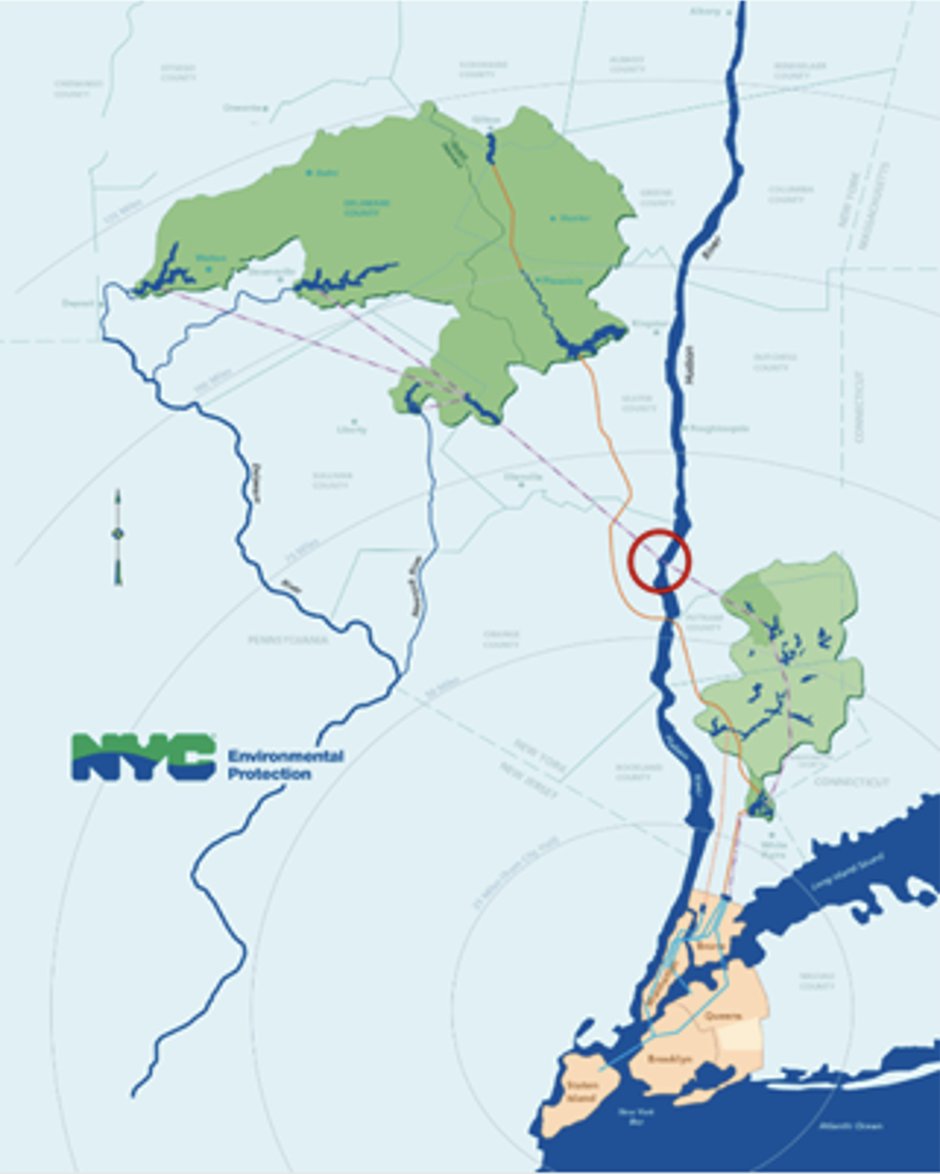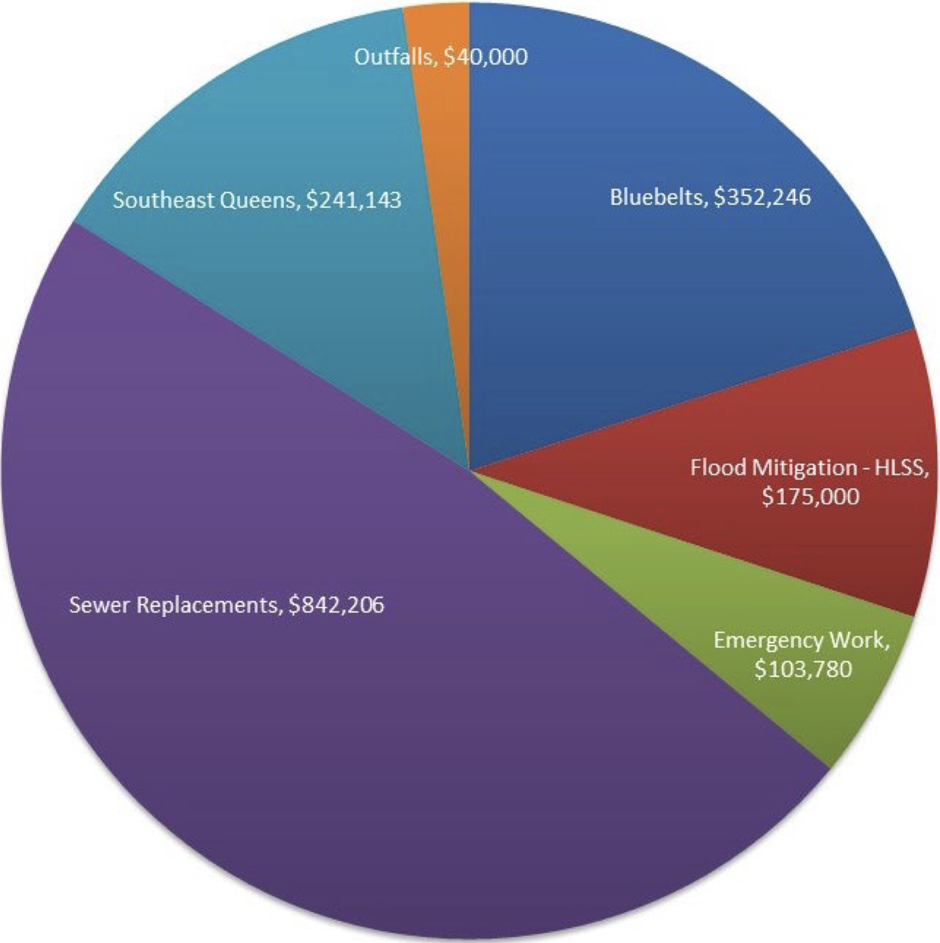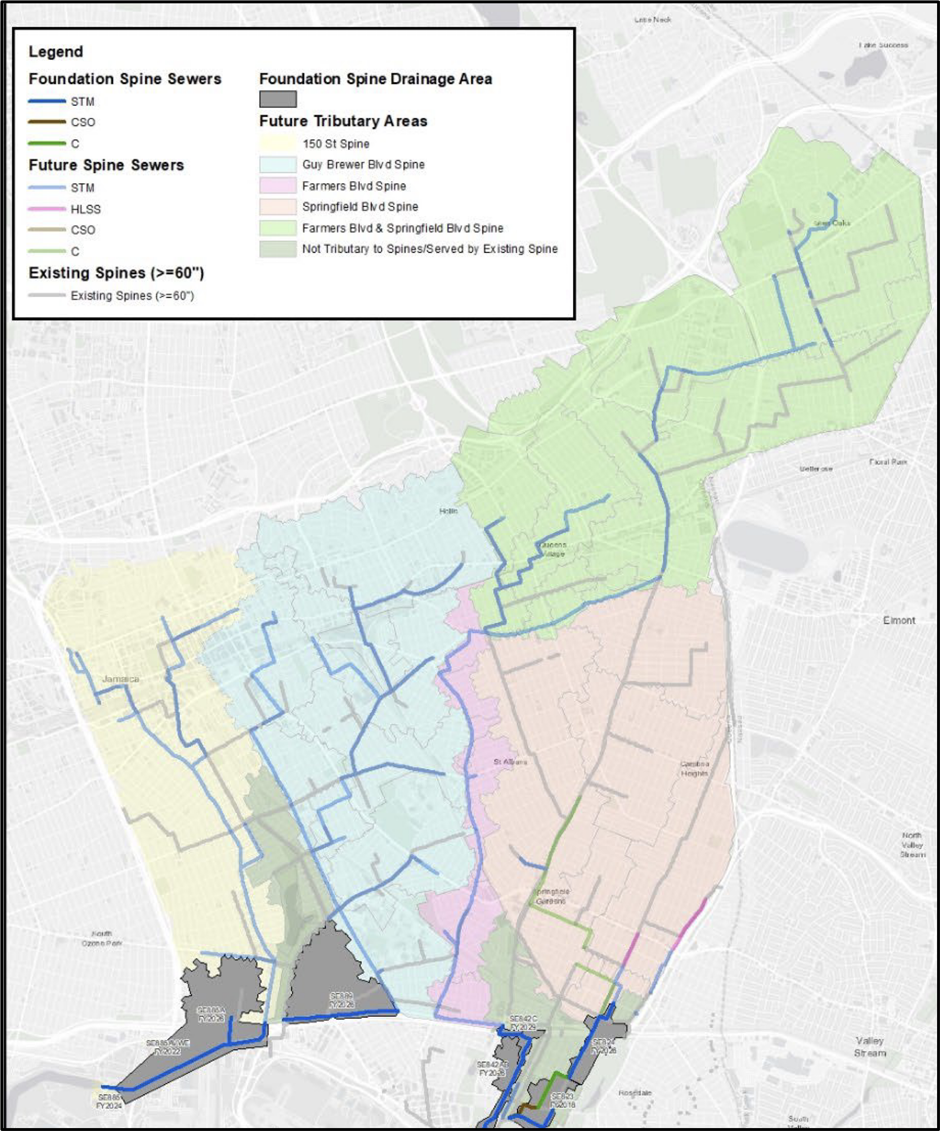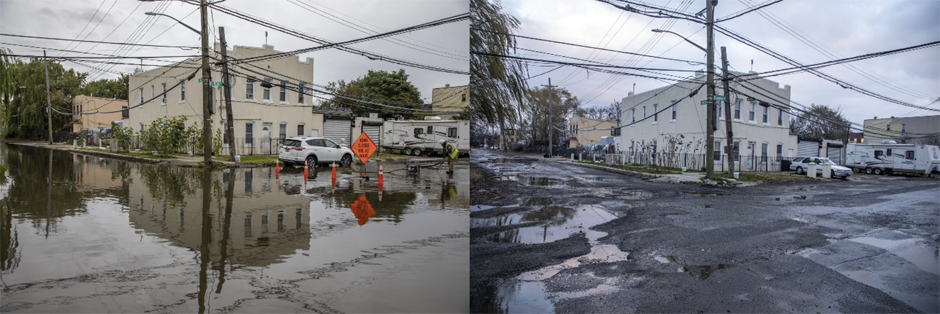Testimony of Rohit T. Aggarwala Commissioner New York City Department of Environmental Protection before the New York City Council Committee on Environmental Protection, Resiliency, and Waterfronts
March 7, 2023
The Preliminary Budget for Fiscal Year 2024, The Preliminary Capital Plan for Fiscal Years 2024-2027, Fiscal 2024-2033 Preliminary Ten-Year Capital Strategy and The Fiscal 2023 Preliminary Mayor’s Management Report
Good morning, Chair Gennaro and members of the Environmental Protection, Resiliency, and Waterfronts Committee. My name is Rohit Aggarwala. I am the Commissioner of the Department of Environmental Protection (DEP) and the City’s Chief Climate Officer. I am here with my colleagues Chief Financial Officer Joe Murin and Deputy Chief Operating Officer Kimberly Cipriano to discuss DEP’s Preliminary Budget for Fiscal Year 2024, Preliminary Capital Plan for Fiscal Years 2024-2027, Preliminary Capital Ten-Year Strategy, and our performance as reflected in the Fiscal 2023 Preliminary Mayor’s Management Report. Most importantly, I am here to talk about how DEP is embracing creativity and a sense of urgency to deal with the challenges that face the agency and the city.
DEP continues to provide the highest quality services to our communities, including serving world-renowned drinking water and keeping our harbor waters cleaner than they have been in 150 years.1 These services are consistently exceptional, and we are very proud of the work that DEP’s 5,400 men and women do every day. But we are ambitious: we are constantly looking for ways to do more, better.
Successful 2022
I have been at DEP for about a year now. I am proud of the work we have accomplished in that time, including:
- Reaching the final steps to prepare for the Delaware Aqueduct shutdown, which I will speak about in more detail in a few minutes,
- Breaking ground on new digesters at Hunts Point,
- Completing more than 2,300 new green infrastructure assets and starting construction on 1,000 more, and completing four new Bluebelts,
- Implementing a new data-driven system for inspecting catch basins, which led to a 62% increase in catch basin inspections in FY23,
- Completing 954 miles of leak detection citywide through our new leak detection program—averting 57 watermain breaks, and
- Managing four times as many citizen idling complaints as in 2021.
Another key accomplishment has been to improve DEP’s contracting and procurement processes. One of our big disappointments of FY22 was that we achieved only a 69% commitment rate for the year. Through a significant whole-of-agency effort, we reached 65.3% committed as of last week, compared to 18% committed at the same time last year. We have 81% of the DEP-managed projects and 38% of non-DEP managed projects registered as of today.

Budget and Capital Outlook
Our FY24 budget and the capital plans support our key efforts and initiatives. Notably, the capital budget is front-loaded. The budget provides significant investment in the next five years, allowing us to start impactful projects as soon as possible. We are ready to spend $2.2B in FY23 and $3.3 in FY24.
The preliminary capital budget plan includes additional funding for several capital projects. These additions include:
- $279 million for the agency’s green infrastructure program,
- $268 million for improvements at Hillview Reservoir.
- $267 million for the Kensico-Eastview tunnel connection,
- $224 million to construct Bluebelts, and
- $160 million for work at the Owl’s Head Wastewater Resource Recovery Facility to improve water quality in the harbor.
We are closely monitoring and pursuing the unprecedented federal and State funding opportunities made possible by the Infrastructure Investment and Jobs Act, the Inflation Reduction Act, the Climate Leadership and Community Protection Act, and the New York State Clean Water, Clean Air and Green Jobs Environmental Bond Act.
New York City must receive its fair share of that investment to meet the challenges of climate change. Some programs and funding structures disadvantage New York City. For example, Water Infrastructure Improvement Act (WIIA) from New York State had a cap of $5 million per municipality. This restriction led New York City, which manages drinking water for about half the state’s residents and contributes the majority of the state tax receipts, to receive just over 2% of the total funding last year. Similarly, the hardship policy that New York State uses to distribute funds explicitly excludes municipalities with populations greater than 300,000 from receiving grant funding, making NYC and surrounding counties only eligible for low-interest loans.
We appreciate the partnership from the City Council to address this inequity, including the work of Chair Gennaro to adopt Resolution 258 of 2022, which calls upon the state to distribute funds commensurate with the city’s contribution to statewide tax revenue.
Delaware Aqueduct
Over the course of FY24, our most important capital project will be the final step in the decades-long effort to repair the Delaware Aqueduct, which has had a leaking segment since at least the 1990s. We completed construction of a bypass tunnel last year, and we expect to connect it and shut off the leaking portion later this year. During several months, we will rely entirely on water from the Catskill and Croton systems. We will make a final decision later this year as to whether we are ready to move forward with the shutoff, but thus far our tests are proving positive. It will be a major achievement when this is accomplished.

Meeting Challenges and Achieving Goals
To put our budget in context, I’d like to share several of the agency’s priorities. These are best summarized under four challenges and two goals:
- Facing climate change
- Recovering from the pandemic
- Adjusting to economic changes
- Encouraging equity
- Protecting New Yorkers’ quality of life
- Managing water rates
Challenge: Facing Climate Change
Everything DEP does will be shaped by the dual goal of combatting and adapting to climate change. Climate change affects all of us, but given the nature of what we do, DEP is often at the front line.
Resiliency
Wastewater Resource Recovery Facilities (WRRFs) are necessarily located next to waterways, making them vulnerable to sea level rise. The resiliency improvements made at these facilities over the last decade ensure that they can operate during more extreme weather events. Resiliency is now integrated into all of our capital work at the planning stage.
Throughout the watershed, DEP has hardened infrastructure to better withstand more frequent major storms. Last year, DEP completed (on time and under budget) a project at Kensico Reservoir to limit erosion of the bank that could cause turbidity. Additionally, DEP is researching how climate change will impact the water supply, including how warmer temperatures might lead to new species in our watershed and the impacts of sea level rise on the Delaware River.
The City is very engaged with resiliency efforts large and small. One of the biggest efforts set to change the City’s waterfront is the U.S. Army Corps of Engineers’ (USACE) Harbor and Tributaries Study (HATS), whose comment period closes today. This study is considering ways to protect the harbor areas in New York and New Jersey from future sea level rise and other climate change challenges. The administration has closely reviewed all of the HATS proposals and is preparing to submit formal comments, which we will be happy to share with the Council.
Stormwater
We have spoken before about the sudden, heavy downpours, known as cloudbursts, that release an incredible volume of rain in a short period of time. These storms may be too intense for our traditional stormwater infrastructure to manage, so we are looking to additional tools to complement sewers.
In response to Hurricane Ida, $1.7 billion was allocated to stormwater management efforts. This includes more than $1 billion for sewer replacements and high-level storm sewers. So far, we have 29 projects in design or development. Our second-largest allocation of funding is directed to expanding Bluebelts, which are ecologically rich drainage systems that naturally handle runoff precipitation that falls on our streets and sidewalks. A third major category is green infrastructure, which uses rain gardens and other green features to absorb stormwater. We’ve installed more than 11,000 GI assets in the last 10 years, and more than 2,000 in 2022 alone. Finally, Cloudburst infrastructure is our fourth and newest approach to stormwater management. These systems use specially engineered open spaces or community amenities, like basketball courts, to hold stormwater during extreme rain events. Recently, Mayor Adams announced nearly $400M of funding for four new Cloudburst projects in Corona, Kissena Park, Parkchester, and East New York. Another 24 locations are being evaluated for this kind of infrastructure.

However, designing and constructing these infrastructure solutions takes several years. To help homeowners in the interim, DEP launched the Rainfall Ready program in 2022. We also held a series of events to distribute inflatable flood barriers in several neighborhoods, and we’ve partnered with council members and community members in areas that are most often impacted, especially following Ida. We invite these continued partnerships.
Challenge: Recovering from the Pandemic
Like every city agency, DEP is still dealing with the impacts of the pandemic on our workforce. DEP staff performed heroically during the pandemic, especially the majority of our staff who continued their work on-site running treatment facilities, fixing infrastructure, or testing in labs. DEP even mass-produced hand sanitizer. I was not at DEP in 2020, but I am grateful for the agency’s work.
Given the various economic and social impacts of the pandemic, we suffered a decline in staff morale and an increase in departures. This, combined with a period when the City restricted hiring, has led our vacancy rate to more than triple since 2020—going from just under 5% then to 16% in January of this year. Now that restrictions on hiring have been lifted, DEP plans to aggressively hire in key roles, with a particular focus on engineers.
Further, we have embarked on a major morale effort, based on the results of an agencywide survey. This included a pilot that allowed management employees to work from DEP facilities that may have been closer to their homes; pursuing salary increases where employees have taken on more complex work; and making targeted facility improvements, such as bathrooms and locker rooms, which are important for staff quality of life.
Challenge: Adjusting to Economic Conditions
Our third challenge is the global economic environment, characterized by inflation, supply chain uncertainty, and labor shortages that we have not seen for decades. These conditions require DEP to further refine its operations to achieve greater efficiency, effectiveness, and reliability.
One example is our expansion of computer-based data collection and operations management, called SCADA systems. SCADA systems can detect and respond to issues at our treatment facilities faster than manual monitoring, reducing downtime and maintenance costs. This real-time data can be used to optimize performance, reducing energy consumption and improving the quality of the treated wastewater. SCADA systems also improve safety by automating hazardous processes.
Another example is the work DEP has contributed to the Capital Process Reform Task Force convened by Mayor Adams and Comptroller Lander. In October, the Task Force released a set of recommendations, including using price adjustment allowances to offset volatile commodity prices, expanding work allowances to reduce change order approvals, and amending procurement laws and regulations. These efforts will speed up capital projects, reduce costs, and increase the City’s capacity to address emerging needs.
Challenge: Encouraging Equity
We are also deeply focused on the challenge of equity. DEP’s WRRFs are a significant presence in many environmental justice (EJ) neighborhoods. WRRFs are invaluable assets for a city, but can be a burden for their neighbors who may have to deal with odors and truck traffic. We have taken great efforts over the years to minimize these negative effects and be better neighbors.
To reduce odors from WRRFs, we are incorporating biological air filtration technology, which uses natural microbes to extract odors from the air. We are also embarking on a major effort to reduce fugitive emissions from our facilities, which produce methane as part of the digestion process. Not only is methane a highly potent greenhouse gas, but research increasingly demonstrates that it can turn into formaldehyde in the presence of sunlight.
We also are working to make our chemical consumption as efficient as possible, reducing costs and truck trips to our facilities. In fact, deliveries to our WRRFs are down by nearly 25% in the last four years.
Of course, being good neighbors means being more than just “not bad.” WRRFs can contribute to neighborhoods beyond the traditional role of treating wastewater. That is why we call them “resource recovery facilities.” The biproducts of the treatment system—biosolids and biogas—can be beneficially used. For many years, the biogas has been used as a renewable energy resource at the WRRFs themselves. Now, we are sharing this green energy with others, connecting the Newtown Creek WRRF to the National Grid system, so that this fossil-free fuel source can power the neighborhood.
Equity is also a key concern with respect to our service provision, and we work hard to ensure that response rates are comparable across all parts of the city. Our infrastructure, however, reflects a century of development decisions that often did not prioritize long-term needs.
The prime example of this is in Southeast Queens, where we are continuing the $2.6 billion effort to upgrade infrastructure. When neighborhoods in Southeast Queens were built up in the last century, many were built without adequate storm sewer systems—some without any at all. For several years, DEP and partner agencies have been working diligently to install storm sewers and other critical infrastructure throughout these neighborhoods. Part of the post-Ida funding for ramping up sewer expansions is allocated specifically for Southeast Queens.

Another area that has faced chronic flooding for decades is the Jewel Streets neighborhood between Brooklyn and Queens, where DEP has been working with the community closely. This area’s low elevation creates a bowl that collects stormwater from all around. We are working on long-term solutions, and have allocated $75 million for this work, but we are also making short-term quick fixes that have real impact. In October, DEP installed a sewer to better drain two problem intersections identified by the community, reducing flooding significantly. Similar solutions are planned for other locations.

The neighborhoods around the Gowanus Canal continue to deal with the negative impacts of heavy industrial use that began over 150 years ago. The city, state, and federal government have been working together to remedy the issue. DEP has already constructed new high-level storm sewers, upgraded the existing sewer infrastructure, and led regular engagement with the community. We have also added green infrastructure across streets, public playgrounds, and the Gowanus Houses. This month, we will start constructing the first of two CSO tanks, which together can hold up to 12 million gallons of overflow. Altogether, these projects represent an unprecedented $1.6 billion investment that will make the Gowanus Canal the cleanest it’s historically been and add 3.6 acres of waterfront open space for the community.
Goal: Protecting New Yorkers’ Quality of Life
While the bulk of DEP’s operation focuses on its role as a water utility, the majority of 311 calls we get are about our non-water mission: air quality and noise enforcement. We are working to innovate in this area.
Many of you know that in 2022, we installed noise enforcement cameras that detect when vehicles exceed the legal noise level and photograph the offending vehicle. The evidence collected by the camera system allows us to send notices of violation to vehicle owners who are suspected to have altered mufflers. We have been happy with the results so far, so we are expanding with seven more cameras in 2023 and have $1 million allocated in the budget for FY24, allowing us to purchase 25 cameras and support hardware and software. These cameras don’t work well everywhere—for example, highways—but we are optimistic about their potential, and we have been pleased to work with several council members on locations for these cameras in their districts.
One aspect of our quality-of-life mission is around enforcing idling laws. The citizen enforcement program enacted by the Council has been highly successful, and we have improved our processes to accommodate a dramatic increase in the number of summonses issued. In 2021, we had 12,000 complaints; this year, the trend suggests we could reach 100,000. However, our administration of this program has taught us a great deal about what works well and what does not, and we are eager to work with the Council, especially on Council Member Menin’s bill (Intro. 684), to streamline the process and make it more effective against repeat offenders.
Goal: Managing Water Rates
DEP’s services—operations, maintenance, and capital upgrades—are directly and almost exclusively funded by revenue collected from water bills. In FY23, we expect to collect roughly $3.8 billion in revenue, virtually all of it from New York City customers.
New Yorkers’ water bills are among the best bargains in New York City: while most everything costs more here than anywhere else, our water rates are well below those of many large American cities. We know that we must manage our operations to keep water rates as low as possible. We must also ensure that our revenue comes in reliably, which protects our credit rating, which in turn keeps our interest rates low.
A key challenge to this has been the dramatic growth in our accounts receivable over the last three years. Nearly 92,000 customers are seriously late—by six months or more—and their delinquent balances have jumped by over 50% from nearly $600 million to about $900 million. This is not just an issue among homeowners or in low-income neighborhoods; about 1,000 buildings south of 90th Street in Manhattan are delinquent.
Some property owners have not paid a bill in a very long time. Approximately 10,000 customers have not paid a dime in over four years.
We are working hard to help those New Yorkers genuinely struggling to pay their water bills. Our Home Water Assistance Program (HWAP) is available to low-income single-family homeowners and the Multifamily Water Assistance Program (MWAP) provides a bill credit to apartment owners who agree to conserve water and keep rents affordable. We have also been spreading the word about the state’s Low-Income Household Water Assistance Program (LIHWAP), a federally funded program that assists low-income households with water and wastewater bills.
In addition, our customer service staff will work individually with any customer with outstanding bills to design a payment agreement over up to 10 years. Our goal is to collect outstanding balances by making it as easy as possible for people to pay their water bills.
In January we launched our one-time Amnesty Program to help New Yorkers who have fallen behind on their water bills settle their debt at a reduced cost. It is the broadest amnesty program DEP has ever offered: it is open to all accountholders, regardless of amount of money owed. It will help customers by forgiving up to 100% of interest when they pay all or a portion of their outstanding bill. We are also offering up to $5,000 in additional support for LIHWAP recipients. This program is designed to assist customers and to bring in revenue to DEP so that we can continue investing in and maintaining our critical systems.
That being said, the Amnesty Program will not continue forever. Once the 90-day amnesty period ends on April 30, we will begin pursuing enforcement actions against those ratepayers who still owe and who have not reached out to DEP for assistance. We will be fair in enforcement, but customers must understand that there are consequences to not paying for water. Being lenient to those who can pay, but choose not to, means raising rates on those who pay their fair share.
Please encourage your constituents to take advantage of the amnesty program, which will only run through late April. If any constituent is having trouble with their bill, encourage that person to contact DEP and talk to our customer service team. We are here to help. People just have to ask.
Looking Forward
Overall, I am excited about what the future holds for DEP. Our FY24 budget supports our key efforts and initiatives. We have great support from Mayor Adams and from the Council. With this continued support, DEP will meet these challenges, achieve our goals, and realize our vision to be a world class water and wastewater utility, while building a sustainable future for all New Yorkers.
Thank you for the opportunity to testify today. My colleagues and I are happy to answer any questions that you have.
- The New York City Department of Environmental Protection (DEP) protects public health and the environment by supplying clean drinking water, collecting, and treating wastewater, and reducing air, noise, and hazardous materials pollution. To achieve this mission, DEP operates and maintains 7,500 miles of sewers that convey an average of 1.3 billion gallons of wastewater per day to 14 in-city wastewater resource recovery facilities.




